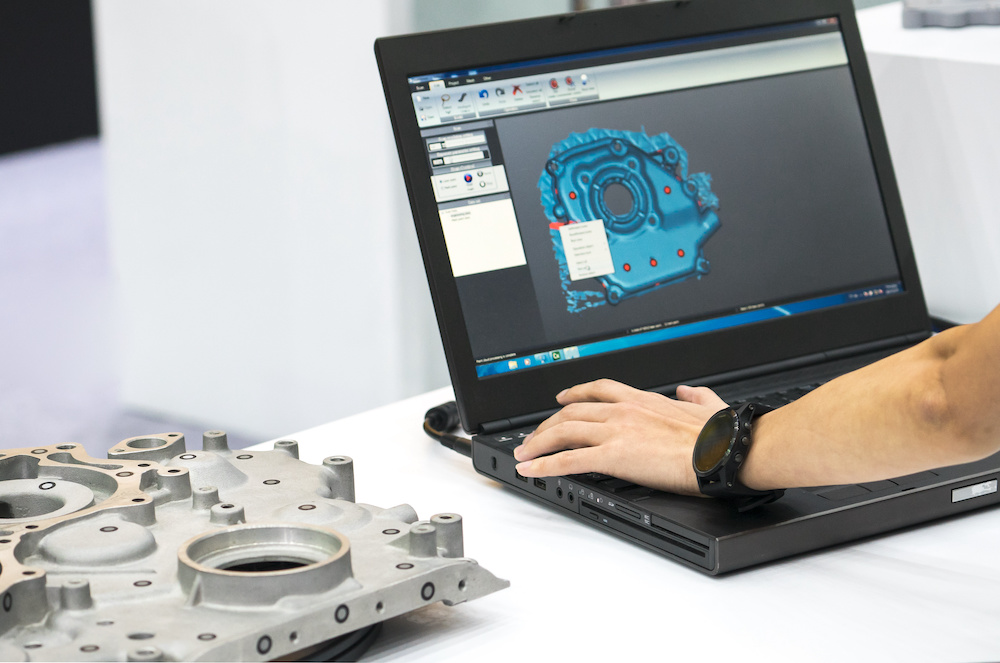Along with everyone else in the manufacturing industry, we’ve been talking a lot about model-based manufacturing, also known as MBM, and the benefits the methodology brings to companies that adopt it. Essentially, model-based manufacturing takes model-based definition, also known as model-based engineering, one step further. As a result, the methodology becomes not just an engineering tool but a universal tool for everybody, all the way through the manufacturing process.
With model-based definition, the engineering team creates a 3D model of a product or design idea. The model contains all the item’s documentation, from engineering BOMs to product specs to process steps. But if the activity stops there, many of the benefits are lost.
Model-based manufacturing reduces data friction and eliminates reliance on slow, error-prone communication (like paper!).
The Situation without Model-Based Manufacturing
Without model-based manufacturing, the manufacturing team continues to rely on their existing ERP and SFC solutions to plan materials, schedule production, and execute against those plans. That means that data must be fed to these solutions in a format they can use quickly and accurately. But what a job that can be:
- Bills of material must be recreated in ERP for material planning
- Process routings must be recreated in both ERP and SFC
- Product specs must be recreated in ERP, QA, and possibly order management
The result is a slowdown of the free flow of data while information is formatted and entered into disparate systems. But that friction creates even more problems. Data errors can be inadvertently introduced when moving from one system to another. Changes to design or customer requirements may not be communicated promptly. Systems can get out of sync. All this leads to the dreaded specter of dueling spreadsheets in every production meeting as each department claims their data is the one truth. It’s a waste of time and energy.
And what happens in manufacturing? Rework and scrap increase. Lead time increases. Cost increases. It’s a bad situation all around.
And millions of manufacturing companies live with it every day.
Want to learn more about how model based product development (MBPD) helps optimize the entire development process from concept to service instructions?
But what if there were a better way?
Companies use PLM to create and manage a digital thread that tracks everything about a product through ideation, creation, manufacturing, and after-sales service. That makes perfect sense. PLM is the only enterprise solution with a data model that encompasses the necessary information for every phase of the product life cycle.
By integrating Creo 3D modeling and ThingWorx to Windchill, PTC has made the old systems, separate processes, and redundant data obsolete. Model-based manufacturing is the promise of the IIoT (Industrial Internet of Things) come to life.
Model-based manufacturing reduces costs, decreases scrap and rework, shortens lead times, and improves quality.
Here’s How Model-Based Manufacturing Works with Creo
Engineering uses the Creo 3D modeling system to create a complete model of the product. Creo is ideal for the task because it has the most advanced 3D modeling capabilities available, including additive manufacturing design and the ability for non-engineers to create or modify designs without having to be Creo experts.

It starts with MBE/MBD
First, the engineering department designs the product using Creo’s MBE capabilities. Then, using the same model, manufacturing can add any information they need and generate the documentation they need to function optimally.
Reduces manual steps that introduce errors
So instead of laboriously creating assembly drawings or routing sheets, workers can get the latest information directly from the model. Using AR, they can even see the on-screen assembly or machining process. This ability to review the correct procedures while performing the operation reduces scrap and rework and improves quality and safety.
Eliminates paper
Instead of QA manually transcribing product specs into datasheets, they can use the 3D model to validate parts against the correct specs. And using ThingWorx as part of the IIoT setup, they will even be able to receive an early warning when processes begin to go out of spec or approach tolerance levels. That ability to respond rapidly saves time and reduces the amount of scrap or items needing rework that manufacturing generates. Again, that reduces cost, improves quality, shortens lead times, and increases customer satisfaction.
The 3D model includes process and operational data, which can generate production schedules. It contains material requirements, which can be used to create master schedules and time-based material requirements. It may even be used to generate product costs, and by using Thingworx on the IIoT, it could be used to calculate cost variances. Process automation truly becomes automated.
Planning and execution systems like ERP and SFC take their information directly from the 3D model.
Improved Collaboration across the Digital Thread
By enabling every department in the business to use the same source data, regardless of their level of product, process, or engineering expertise, Creo improves the efficiency of planning and execution processes as well as engineering. In addition, it provides a standard tool to facilitate discussions and to communicate changes. It no longer matters which enterprise application a department relies on for its day-to-day information or where the people are located. Model-based manufacturing knocks down departmental and geographic walls and replaces them with unity and communication.
How do I use Creo for MBM planning and execution in my company?
MBM is a journey without a final destination because it’s a journey of continuous improvement. So if you’d like to talk to us about how to take that first step toward MBM, we’re here to help you map out your journey and discuss the best tools for your specific needs. To learn more, contact us today.
Model-based manufacturing is a journey. Take the first step today.
